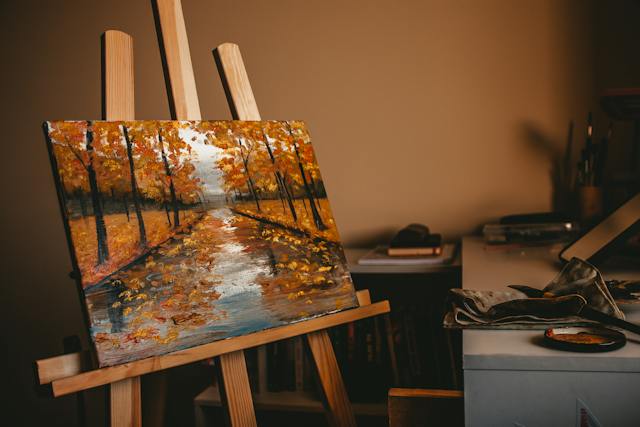
In this post, we answer a common question, “Why Is My Oil Painting Taking So Long to Dry?” We’ll talk about how factors like paint composition, thickness, and the environment impact drying times, and practical tips on speeding up the process.
Why is my oil painting taking so long to dry?
Oil paint takes longer to dry due to the nature of oil paint, which dries by oxidation and polymerization rather than evaporation. The drying time varies based on paint thickness, pigment types, environmental conditions, and the type of oil used.
Some oil paints naturally have a higher oil content, which leads to longer drying times. For example, colors like ivory black or titanium white are known for their slower drying rates.
How thick you apply your paint layers can significantly affect drying time. Thicker applications of oil paint take much longer to dry than thin layers.
Humidity, temperature, and airflow all play a role in drying time. Low temperature humid environments can slow down the drying process.
How long does it take for oil paint to dry completely?
Oil paint can take two to 12 days in thin films to become touch-dry. However, complete drying can take several months to a year, depending on the thickness and composition of the paint.
What will make oil paint dry faster?
Using fast-drying mediums, thinning the paint with solvents, ensuring proper ventilation, and keeping the painting in a warm environment can speed up the drying process. For example, Winsor & Newton’s Liquin Original can increase the drying rate by approximately 50%. Watch the video below to learn more about Liquin!
Does oil paint dry faster than acrylic?
No, oil paint generally dries slower than acrylic. Acrylic paint dries through evaporation, a quicker process than the oxidation and polymerization that oil paint undergoes.
What color oil paint dries fastest?
Fast-drying oil colors include earth tones like umbers and siennas and some pigments like Prussian Blue. These colors typically become touch dry within two days.
Will direct sunlight dry my oil painting faster?
While warmth can aid in drying, direct sunlight is not recommended for drying oil paintings as it can cause other issues like yellowing or cracking.
The Correct way to Use Liquin
Tanner Steed’s Experience with Liquin
Tanner Steed shares insights from his experience with Liquin, addressing initial concerns about its strong scent and safety warnings. He highlights its combustible nature and potential as a skin irritant. Emphasizing safe usage, especially with toxic paints like cadmium, Tanner guides beginners towards Liquin Original.
Understanding Liquin’s Types and Benefits
Various types of Liquin cater to different painting stages. Tanner explains Liquin Fine Detail and Liquin Impasto Medium, noting their unique applications. He details Liquin’s advantages, such as reducing brush stroke retention and providing a semi-gloss finish, while cautioning against its use as a varnish.
Mixing Liquin with Paint
Tanner corrects a common misconception: Liquin should mix directly with paint, not sit in a medium cup. He recommends a 20% Liquin to paint ratio, adjusting based on paint properties like oil content and drying times.
Technical Aspects of Liquin Mixing
Tanner discusses mixing Liquin with various oil paints. He insists on a maximum 30% Liquin mix to maintain layer integrity and avoid cracking.
The ‘Fat Over Lean’ Rule in Painting
Explaining the ‘fat over lean’ rule, Tanner advises using less oily layers at the base, building up to more oil in the top layers. He warns against thin layers over Liquin to prevent cracking.
Demonstrating Liquin’s Use
Tanner mixes Liquin with Williamsburg titanium white and Michael Harding ivory black in his demonstration. He stresses good ventilation due to toxicity.
Consistency and Texture Changes
As Tanner mixes, he observes changes in paint consistency and texture, noting the increased fluidity due to Liquin. He reminds artists to adhere to the mixing ratio, especially for glazing, to avoid yellowing.
Leave a Reply